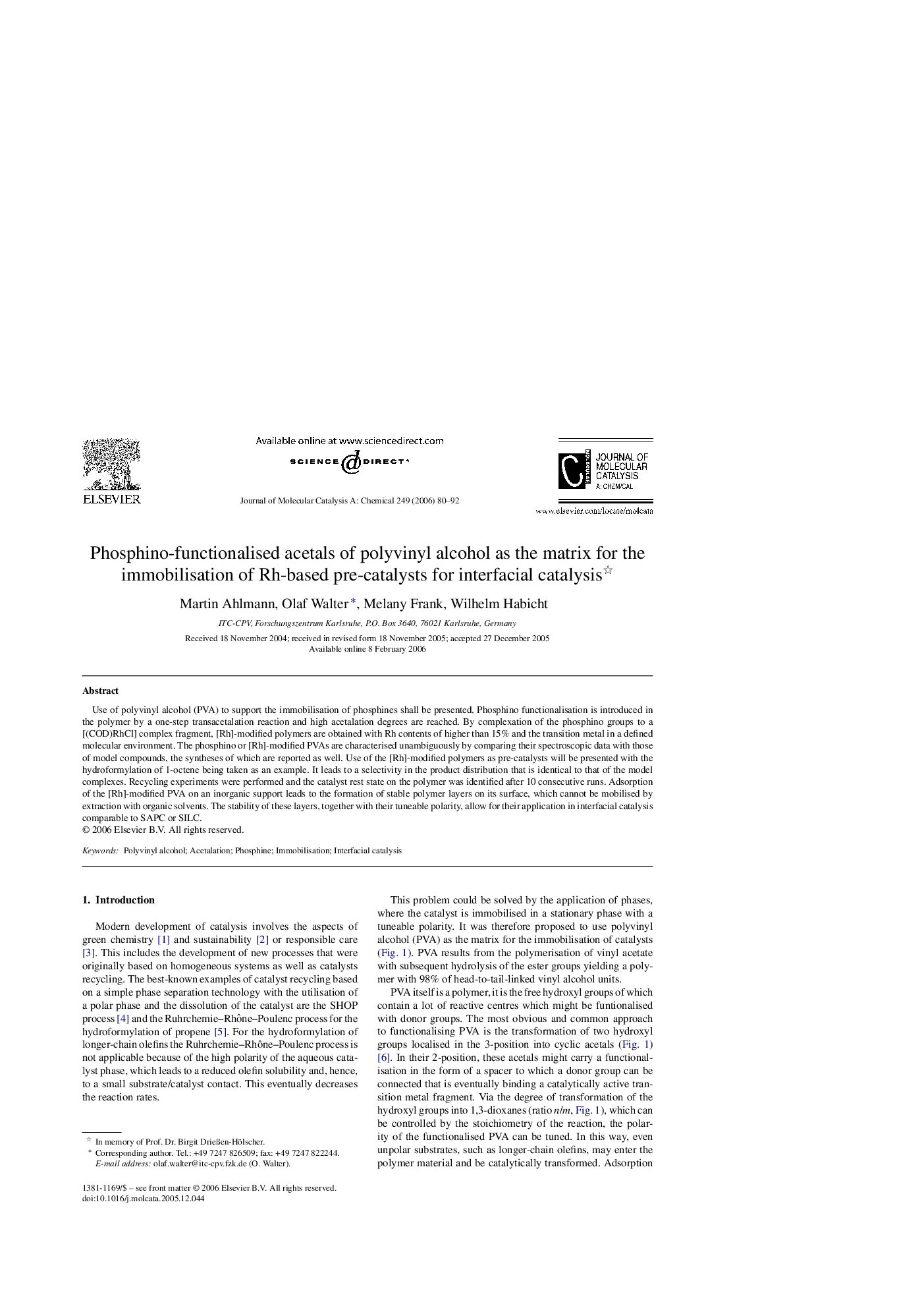| Article ID | Journal | Published Year | Pages | File Type |
|---|---|---|---|---|
| 69013 | Journal of Molecular Catalysis A: Chemical | 2006 | 13 Pages |
Use of polyvinyl alcohol (PVA) to support the immobilisation of phosphines shall be presented. Phosphino functionalisation is introduced in the polymer by a one-step transacetalation reaction and high acetalation degrees are reached. By complexation of the phosphino groups to a [(COD)RhCl] complex fragment, [Rh]-modified polymers are obtained with Rh contents of higher than 15% and the transition metal in a defined molecular environment. The phosphino or [Rh]-modified PVAs are characterised unambiguously by comparing their spectroscopic data with those of model compounds, the syntheses of which are reported as well. Use of the [Rh]-modified polymers as pre-catalysts will be presented with the hydroformylation of 1-octene being taken as an example. It leads to a selectivity in the product distribution that is identical to that of the model complexes. Recycling experiments were performed and the catalyst rest state on the polymer was identified after 10 consecutive runs. Adsorption of the [Rh]-modified PVA on an inorganic support leads to the formation of stable polymer layers on its surface, which cannot be mobilised by extraction with organic solvents. The stability of these layers, together with their tuneable polarity, allow for their application in interfacial catalysis comparable to SAPC or SILC.
Graphical abstractPhosphino functionalisation is introduced in polyvinylalcohol (PVA) by a trans-acetalation reaction, high acetalation degrees can be reached. By complexation of the phosphino groups [Rh]-modified polymers are obtained. The use of the [Rh]-modified polymers as pre-catalysts is presented. Recycling experiments were performed and the catalyst rest state on the polymer was identified. The results show that PVA may be a suitable material for the immobilisation of molecular catalysts forming stable layers on an inorganic support with a possible application in interfacial catalysis. Figure optionsDownload full-size imageDownload as PowerPoint slide
